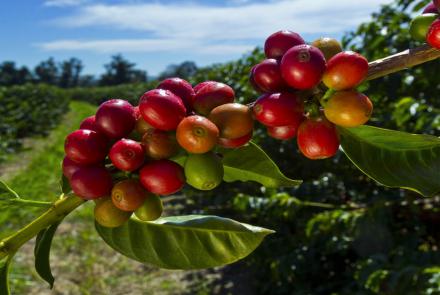HARVESTS AND SEASONS OF COFFEE IN EAST AFRICA.
The Ideal Growing Conditions for Arabica and Robusta Coffee in East Africa
Coffee is a tropical evergreen shrub that thrives between the Tropics of Cancer and Capricorn, and East Africa, with its favorable tropical climate, is one of the best regions for coffee production. The two most commercially significant coffee species grown in East Africa are Coffee Arabica (Arabica) and Coffee Canephora (Robusta), both of which contribute to the region’s rich coffee culture.
Arabica Coffee in East Africa: The Perfect Climate for Quality Beans
Arabica coffee is grown in cooler climates at high altitudes, making the highland regions of East Africa perfect for cultivating Arabica beans. Arabica coffee requires specific environmental conditions to thrive, including moderate temperatures, defined rainy and dry seasons, and fertile soils. The optimal growing climate for Arabica coffee is in sub-tropical regions at altitudes between 1800 to 3600 feet (550 to 1100 meters). These regions, with their mild temperature range of 15-24ºC (59-75ºF), provide the perfect conditions for coffee trees to grow.
For Arabica coffee to flourish, it needs well-drained soil, and the best soils are fertile volcanic red earth or deep sandy loam. Coffee trees are sensitive to extreme conditions, so heavy clay or sandy soils are not suitable. The ideal altitude and temperature ensure that the Arabica coffee beans develop their signature complex flavors and acidity.
Coffee Production Seasons in East Africa
The coffee growing and harvesting seasons in East Africa vary by country, depending on regional climate patterns and altitude. The tropical climate in East Africa is generally ideal for coffee production, but the timing of planting and harvesting is highly dependent on the region.
Arabica Coffee in Uganda
In Uganda, Arabica coffee is grown mainly in two seasons. The Western Region of Uganda experiences the planting season from April to June, while the Eastern and West Nile Regions have their planting season from October to February. For example, in Mbale, the planting season for Arabica coffee typically occurs between March and April, with harvesting taking place from August to November. Pruning happens from December to February, ensuring that the coffee trees are prepared for the next flowering season during the dry months.
Arabica Coffee in Rwanda and Burundi
In Rwanda and Burundi, the coffee harvest runs from April to September, with Rwanda’s coffee growing season peaking between September and October. The plantations in these countries are situated between 4,000 and 6,500 feet above sea level, which provides the ideal high-altitude conditions for Arabica coffee. The combination of high altitude, volcanic soil, and the region's misty climate contributes to the development of high-quality beans, particularly the Rwanda Bourbon coffee variety, which is renowned for its flavor and consistency.
Arabica and Robusta Coffee in Tanzania
In Tanzania, the coffee-growing regions are divided by altitude. Arabica coffee makes up approximately 70% of the coffee produced in Tanzania, with the majority of this grown in high-altitude areas such as Mount Kilimanjaro. Robusta coffee is typically cultivated at lower altitudes, particularly near Lake Victoria. Harvest times in Tanzania generally run from September to January. Interestingly, 95% of Tanzanian coffee is produced by smallholder farmers who tend to coffee farms smaller than five acres.
The Role of Smallholder Farmers in East African Coffee Production
One of the most striking aspects of coffee production in East Africa is the high percentage of smallholder farmers involved in the process. In countries like Tanzania, Rwanda, and Uganda, smallholder farms make up the backbone of the coffee industry, with many farmers cultivating Arabica and Robusta coffee on plots of land smaller than five acres. This system leads to highly diverse coffee profiles, with distinct flavors that vary by region, altitude, and processing methods.
Despite the challenges of small-scale farming, the dedication and expertise of these farmers contribute to the exceptional quality of East African coffee that is beloved around the world.
Conclusion: The Future of Arabica Coffee in East Africa
The combination of high-altitude regions, ideal growing climates, and fertile volcanic soils makes East Africa one of the most important coffee-producing regions in the world. Whether it's the Arabica coffee of Ethiopia, Rwanda, and Uganda, or the Robusta coffee from Tanzania and Kenya, East African coffee is known for its unique flavors, complex aromas, and exceptional quality. With the continued support of smallholder farmers and investments in sustainable practices, East Africa’s coffee industry is well-positioned to thrive for generations to come.


